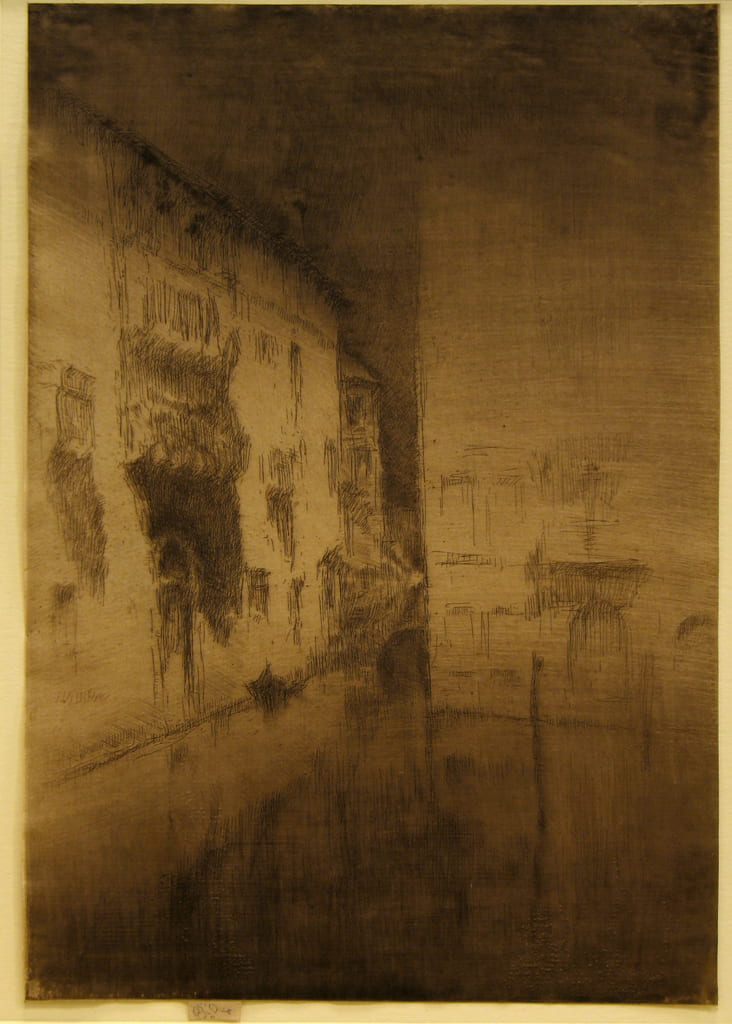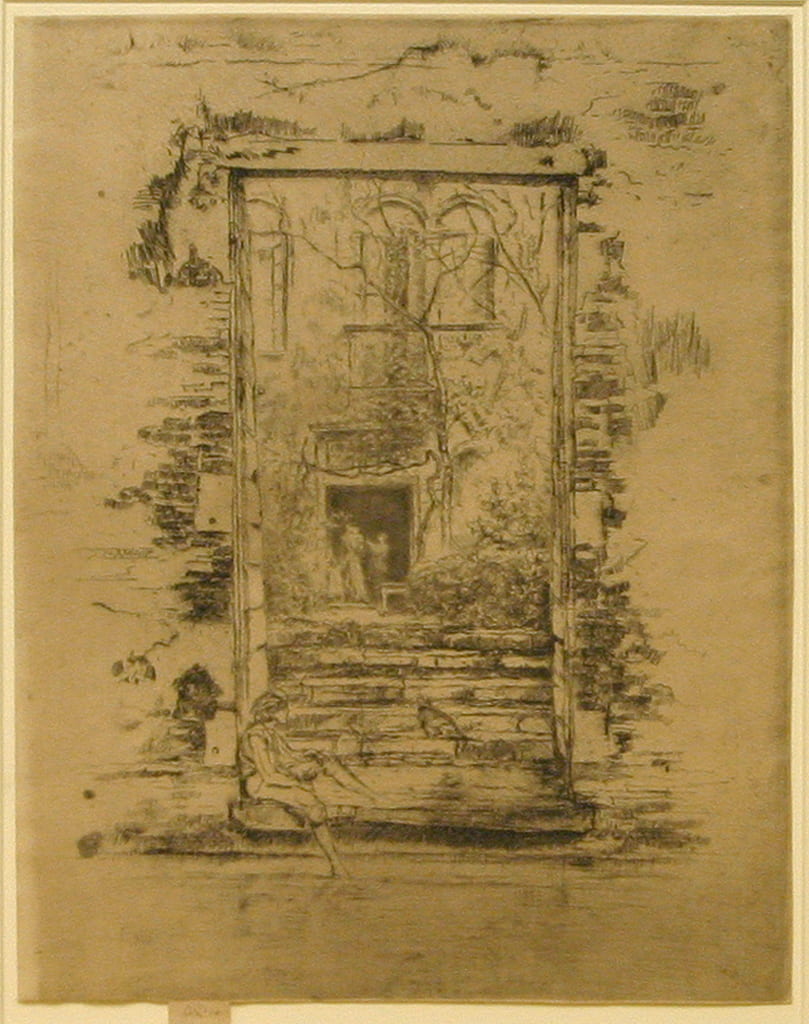James McNeill Whistler (1834–1903) visited Venice in 1879–80 under commission from the Fine Art Society of London to produce a series of Venetian etchings, eventually published in two sets. In the “Second Venice Set,” Whistler studiously avoided the city’s tourist sites in favor of its unknown and in-between places. Nocturne: Palaces depicts the murky void between two monumental palazzos. In The Garden, Whistler directs our gaze through a crumbling doorframe to an empty courtyard and a further entryway masked by shadows, suggesting spaces yet unseen. By selecting neglected pockets of obscurity over the city’s splendid facades, the etchings call attention to the singularity of the artist’s vision as well as the inexhaustible aesthetic allure of Venice, where beauty seeps from every crevice. The writer Henry James similarly urged travelers to forgo the conventional tourist routes and discover more personal points of beauty: “Choose your standpoint at random and trust the picture to come to you.”[10]
Image credits:
James McNeill Whistler (American, 1834–1903), Nocturne: Palaces, 1886. Etching, 11 7/8 x 7 7/8 in.; and The Garden, 1886. Etching, 12 1/4 x 9 1/4 in. Mildred Lane Kemper Art Museum, Washington University in St. Louis. Gifts of Dr. Malvern B. Clopton, 1930.

